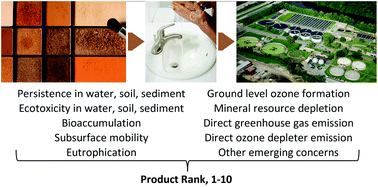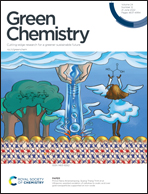Method to incorporate green chemistry principles in early-stage product design for sustainability: case studies with personal care products†
Abstract
Applying green chemistry principles in raw material selection for down-the-drain products is a powerful tool to improve product sustainability. We developed a method to support sustainability-minded design, or eco-innovation, implemented as a spreadsheet tool, for assessing the potential environmental impact of down-the-drain personal care products at the early design stage. End-of-life ecological risk assessment (ERA) is traditionally used for down-the-drain products. Life cycle assessments (LCAs) include a broader range of impacts but require supply chain data not available at the early design stage. We used all feasible ERA and LCA measurement scales for environmental concerns as “potential impact indicators” (PI-indicators). PI-indicators from ERA include bioconcentration in fish and Predicted No Effect Concentrations (PNECs) in water, sediment, and/or soil, depending on the environmental fate of ingredients in the product. PI-indicators from LCA include phosphorus content (eutrophication potential), photochemical ozone (smog) formation potential, mineral resource depletion, and direct emissions of greenhouse gases or ozone depleters. Emerging regulatory concerns included are persistence, subsurface migration potential, and partial degradation of polymers. PI-indicators are aggregated using weighting factors to yield a rank between 1 (best) and 10 (worst) for each ingredient and translated to a product rank using a weighted average. The tool allows end users to change PI-indicators as science and priorities change. The method is demonstrated for 10 shampoo and 9 facial makeup products illustrating differentiation among formulas to promote sustainability at the early product design stage.



 Please wait while we load your content...
Please wait while we load your content...